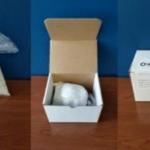
For over 50 years, IEP's Combustion Research Center (CRC) has been at the forefront of testing explosibility characteristics of combustible dusts. CMC Technologies can help you get the explosibility tests ordered for the Australian and New Zealand markets.






Understanding combustion hazards and implementing safety measures starts with reliable data on process materials. Material combustion hazard testing is the focus of the Combustion Research Center (CRC). The CRC has served the process safety community for over 40 years by providing high quality combustion hazard data on dusts, liquids and gases. IEP employ recognized test methods, such as those published by ASTM, U.S. DOT, UN, and others, to conduct dust explosion testing and tests to determine the ignition properties of dusts, liquids, and gases.
Some of the most common tests performed at the CRC include:
Dust cloud explosibility data, maximum explosion pressure, PMAX, and explosibility rate constant, K, is used to design explosion protection systems including explosion venting, explosion isolation, and explosion suppression systems.
- Dust explosibility GO/NO Go Screening acc to ASTM E1226
- Pmax and Kst acc to ASTM E1226
Minimum explosible concentration, MEC acc to ASTM E1515, may be used as an element of a deflagration risk assessment that takes into account all of the factors that are pertinent to an assessment of the explosion and fire hazard of a particular process.
Limiting oxygen concentration, LOC Dusts ASTM E2931, can be of value when developing fire and explosion prevention and protection strategies that employ inert gases to reduce the concentration of oxygen in a process space.
Minimum ignition energy, MIE acc to ASTM E2019, of a dust cloud is primarily used to assess the likelihood of ignition during processing and handling. The likelihood of ignition is used to evaluate the need for precautions such as explosion prevention systems.
Ignition temperature of a dust cloud, MIT Cloud or T(c) acc to ASTM E1491. This procedure measures the minimum temperature at which a given dust cloud will auto-ignite when exposed to air heated in a furnace at local atmospheric pressure.
Hot surface ignition temperature of a dust layer, MIT Layer, measures the minimum temperature at which a dust layer will self-heat. This dust ignition characteristic can be used as one element of a fire risk assessment that takes into account all pertinent risk factors.
Ignition by self-heating is a procedure to assess the tendency of a bulk dust to undergo spontaneous ignition when exposed to a heated environment.

